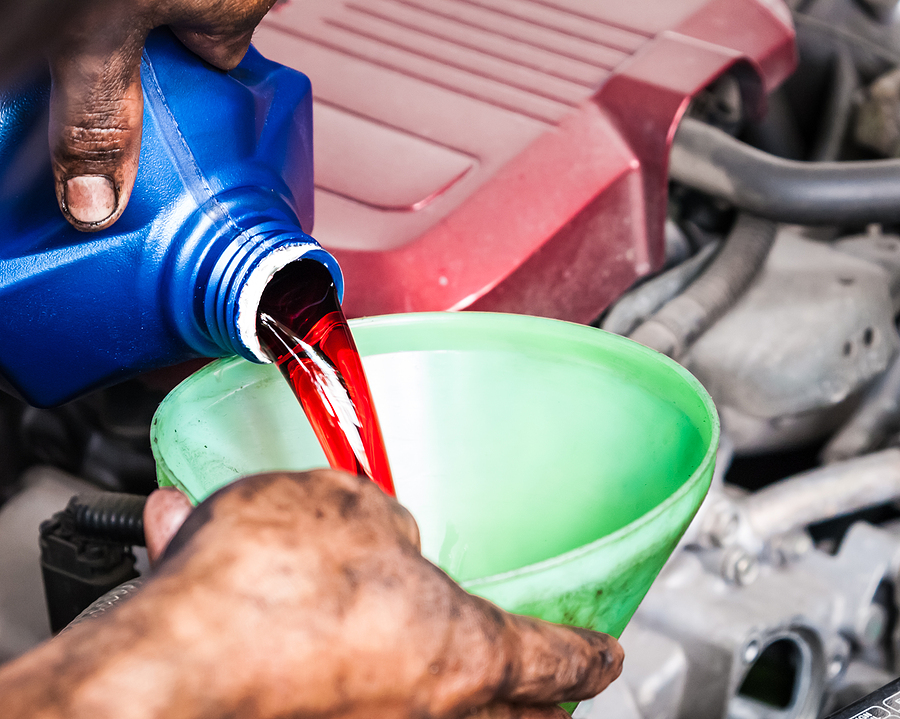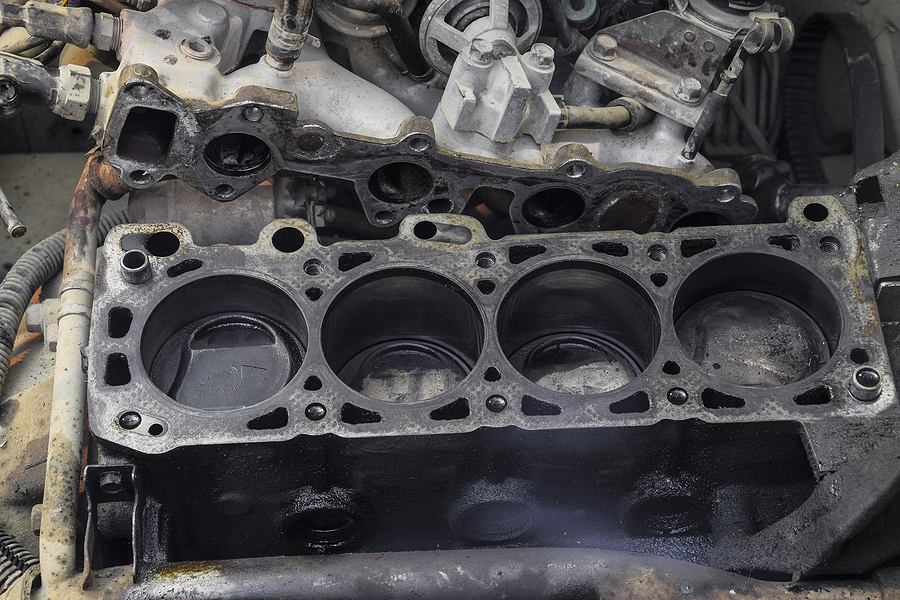Your car is a complex machine, and just like the human body needs blood to function, your vehicle relies on a variety of essential fluids to run smoothly. These automotive fluids lubricate, cool, clean, and power critical components, ensuring everything works as it should. Neglecting them can lead to poor performance, costly repairs, and even safety hazards.
Understanding the role of these car fluids and how to maintain them is a cornerstone of responsible car ownership. This guide will walk you through the six most important fluids in your vehicle. You’ll learn what they do, how to check them, and when they need to be replaced, empowering you to take better care of your car and have more informed conversations with your mechanic.

Top Automotive Fluids Every Car and Truck Needs
Engine Oil
Engine oil, often called motor oil, is arguably the most critical fluid in your car. It lubricates the engine’s moving parts to reduce friction, cleans away harmful deposits, and helps dissipate heat to prevent overheating.
What Does Motor Oil Do?
The primary job of engine oil is to create a thin film between metal surfaces, preventing them from grinding against each other. Without it, the intense friction and heat would cause the engine to seize up and fail. It also traps dust, dirt, and combustion byproducts, carrying them to the oil filter to be removed.
Types of Engine Oil
- Conventional Oil: This is the most basic and affordable type of motor oil, refined from crude oil. It’s suitable for many older vehicles with simple engine designs.
- Synthetic Oil: This oil is chemically engineered to provide superior performance, especially in extreme temperatures. It offers better lubrication and lasts longer than conventional oil.
- Synthetic Blend: As the name suggests, this is a mix of conventional and synthetic oils, offering a balance between performance and cost.
When choosing an oil, you’ll also see a viscosity grade (like 5W-30). Viscosity is simply a measure of the oil’s “thickness.” Your owner’s manual will specify the correct viscosity for your vehicle.
Engine Oil Maintenance
The old rule of thumb was to change your oil every 3,000 miles, but modern engines and oils have extended this interval. Most vehicles now recommend an oil change every 5,000 to 7,500 miles. Some cars have an oil life monitoring system that will tell you when it’s time for a change. Always consult your owner’s manual for the most accurate schedule.
Warning Signs:
- Low oil level on the dipstick.
- Dark or sludgy oil that looks thick and dirty.
- Engine knocking sounds, indicating poor lubrication.
- The oil pressure warning light illuminates on your dashboard.
Coolant (Antifreeze)
Coolant, also known as antifreeze, circulates through the engine and radiator to regulate the engine’s temperature. It prevents the engine from overheating in the summer and from freezing in the winter.
What Does Coolant Do?
Your engine generates a tremendous amount of heat. Coolant absorbs this heat as it passes through the engine and then releases it as it flows through the radiator. The “antifreeze” component is a chemical (usually ethylene glycol) that lowers the freezing point and raises the boiling point of the water it’s mixed with.
Coolant Maintenance
Coolant degrades over time and loses its protective properties. It’s generally recommended to flush and replace the coolant every 30,000 to 50,000 miles, or every three to five years.
Warning Signs:
- Your car’s engine is overheating.
- You notice a sweet smell coming from under the hood.
- The coolant level is low in the reservoir.
- A puddle of green, orange, or pink fluid under your car.
Got a Beat-Up Car? Sell it to Us! 💲
Brake Fluid
Brake fluid is a critical safety component. It operates within a hydraulic system, which means it uses fluid pressure to transfer the force from your foot on the brake pedal to the brakes at each wheel.
What Does Brake Fluid Do?
When you press the brake pedal, you’re pressurizing the brake fluid within the brake lines. This pressure activates the brake calipers, which squeeze the brake pads against the rotors, slowing the car down. For this system to work, the fluid must be incompressible.
Brake Fluid Maintenance
Replacement Schedule: Brake fluid is hygroscopic, meaning it absorbs moisture from the air over time. This moisture can lower the fluid’s boiling point, leading to a loss of braking power, and can cause internal corrosion. For this reason, it’s recommended to replace brake fluid every two to three years, regardless of how many miles you’ve driven.
Warning Signs:
- A spongy or soft feeling when you press the brake pedal.
- The car takes longer to stop than usual.
- The brake warning light is on.
Power Steering Fluid
Power steering fluid is another hydraulic fluid that makes turning the steering wheel much easier. Without it, you’d have to put in a lot more effort to steer your vehicle, especially at low speeds.
Power Steering Fluid Purpose
This fluid transmits pressure within the power steering system, assisting your efforts to turn the wheels. It also lubricates the moving parts of the power steering pump and steering gear.
Power Steering Fluid Maintenance
Replacement Schedule: There isn’t always a strict replacement schedule for power steering fluid. It’s good practice to check the level during every oil change. Many mechanics recommend replacing the fluid every two years or if it appears dark and contaminated.
Warning Signs:
- Difficulty turning the steering wheel.
- A whining or groaning noise when you turn the wheel.
- The fluid level is low in the reservoir.
Transmission Fluid
Transmission fluid is essential for the smooth operation of your vehicle’s gearbox. It lubricates the gears and other internal components, helps cool the transmission, and provides the hydraulic pressure needed to shift gears in an automatic transmission.
The Role of Transmission Fluid
In a manual transmission, this fluid primarily serves as a lubricant for the gears. In an automatic transmission, the Automatic Transmission Fluid (ATF) is much more complex. It acts as a coolant, lubricant, and hydraulic fluid that facilitates gear shifts.
Transmission Fluid Replacement
The maintenance needs vary significantly between manual and automatic transmissions.
- Manual Transmission: Change the fluid every 30,000 to 60,000 miles.
- Automatic Transmission: The interval is longer, typically every 60,000 to 100,000 miles.
Always check your owner’s manual, as some modern “sealed” transmissions are advertised as having “lifetime” fluid, though many mechanics still recommend a change around 100,000 miles.
Warning Signs:
- Difficulty or hesitation when shifting gears.
- Slipping gears or rough shifts.
- A red fluid leak under your car (for automatic transmissions).
- The transmission warning light is on.
Windshield Washer Fluid
While not critical for the engine’s operation, windshield washer fluid is vital for safe driving. It helps keep your windshield clear of dirt, bugs, and other debris that can obstruct your vision.
Why Use Windshield Washer Fluid?
It’s a specially formulated cleaning solution that is sprayed onto your windshield via small nozzles. It works with your wiper blades to clean the glass effectively.
Windshield Fluid Refills
There is no replacement schedule; you simply refill the reservoir as needed. It’s wise to check the level regularly and top it off, especially before a long road trip or during seasons with lots of bugs or road salt.
RECAP
Understanding your car’s fluids is a major step toward becoming a more confident and responsible vehicle owner. Regular checks and timely replacements are a form of preventative maintenance that saves you money by preventing major component failures down the road.
Take action today by locating these fluid reservoirs under your hood and checking their levels. Grab your owner’s manual and familiarize yourself with the specific fluid types and maintenance schedules recommended for your car. By staying on top of these simple tasks, you’ll ensure your vehicle remains safe, reliable, and ready for the road ahead.
Is your car or truck far past the point of return? Rather than wasting your money on more maintenance that gets you nowhere, consider scrapping it for cash on the spot. Schedule a free appraisal to see how much your beater is worth. Our junk car buyers tow for free and pay only in cash!
Related Post: The Essential Guide to DIY Car Maintenance and Repairs









